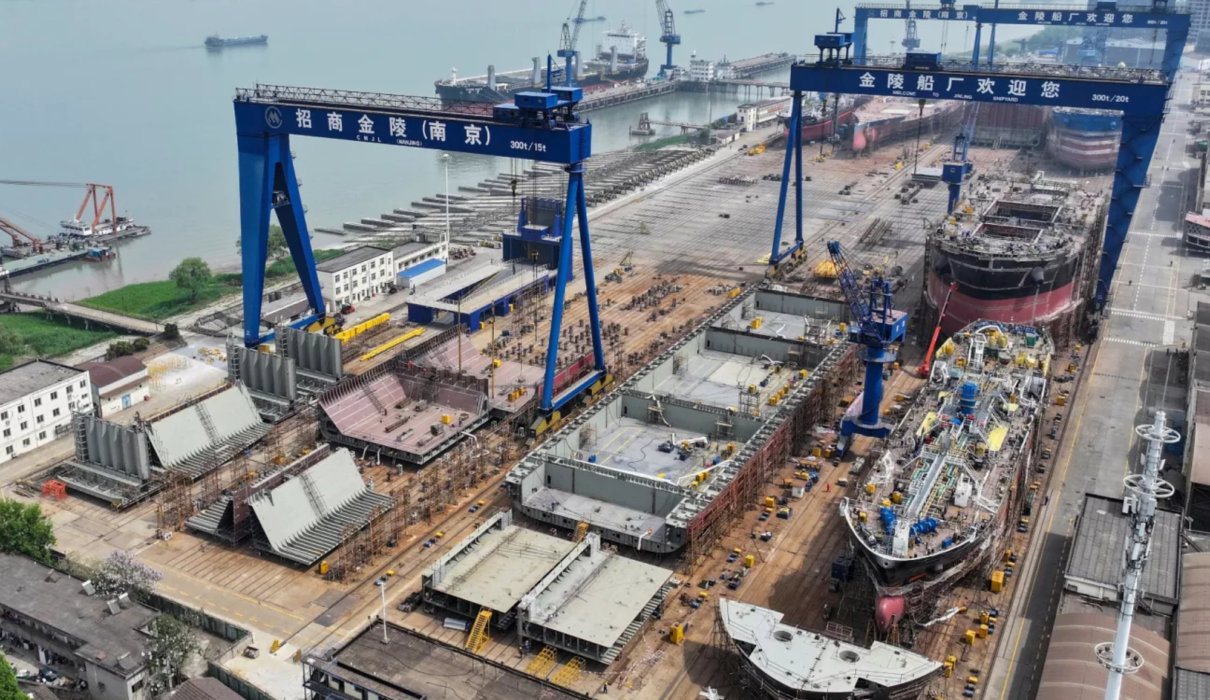Beijing’s high-tech defiance crushed U.S. tariff ambitions: China’s April 2025 exports leapt 15%, fueled by record-breaking lithium battery shipments and AI machinery, while American imports from China cratered 12%—forcing automakers like Ford and Apple into a desperate pivot to Vietnamese and Mexican suppliers. Economists warn the tariffs now risk igniting inflation and splintering global trade into rival blocs.
Lithium Batteries and AI Machinery: China’s Tariff-Proof Growth Engines
China’s lithium battery exports exploded by 62% year-over-year to 28billion,withindustrytitanCATLsecuringcontractstosupply7028billion,withindustrytitanCATLsecuringcontractstosupply709 billion deal with Saudi Arabia to automate 50+ Neom megacity projects.
“The tariffs targeted legacy industries, but China outmaneuvered the U.S. by doubling down on sectors where it holds unassailable tech leads,” said Dr. Linda Chen, a trade analyst at the Peterson Institute. “You can’t tariff what you can’t replace.”
U.S. Import Collapse: The Vietnam-Mexico Pivot and Its Pain Points
The 12% nosedive in U.S. imports from China—the steepest since 2018—has accelerated a supply chain exodus:
- Automotive Sector: Ford and Rivian are racing to secure lithium batteries from Vietnam’s VinFast, but face 6-8 month delays due to underdeveloped infrastructure.
- Electronics: Apple shifted 30% of its iPad production to Mexico, but rising labor costs and cartel-related logistics risks have slashed profit margins by 15%.
- Semiconductors: Texas Instruments reported a 22% Q1 cost increase after relocating chip testing to Malaysia, citing “lack of specialized technicians.”
The scramble has turned Vietnam and Mexico into trade boomtowns. Vietnam’s exports to the U.S. spiked 31% in Q1 2025, while Mexico’s manufacturing sector added 500,000 jobs—though both nations now grapple with overstressed ports and electricity shortages.
Inflation Time Bomb: Consumer Electronics Prices Jump 4%
The tariffs’ ripple effects are hitting U.S. consumers:
- Smartphones: Average prices rose 6.5%, with Samsung’s Galaxy Z Fold 8 now retailing at 2,199—upfrom2,199—upfrom1,999 pre-tariffs.
- Laptops: Dell’s XPS series saw a 9% price hike as Chinese-made hinges and cooling systems face 25% duties.
- EVs: Tesla’s Model Y costs rose $3,200 due to pricier Chinese battery components, despite being assembled in Texas.
“These tariffs are a double-edged sword,” warned Chen. “They’ve protected U.S. steel and legacy auto jobs but destabilized industries reliant on precision tech only China mass-produces.” The Fed estimates the tariffs could add 1.2% to core inflation by 2026 if the import slump persists.
Policy Gridlock: Biden’s Defense vs. Industry Backlash
The White House remains defiant. “We will not cede critical industries to China’s state-subsidized dumping,” said U.S. Trade Representative Katherine Tai, pointing to a 19% rise in domestic EV battery plant investments.
But industry leaders are pushing back. “We support reshoring, but you can’t flip a switch and rebuild decades of supply chain infrastructure,” said John Bozzella, CEO of the Alliance for Automotive Innovation. His group is lobbying for tariff exemptions on graphite and rare earth minerals—materials where China controls 80% of global refining.
Global Fallout: EU Splinters, ASEAN Profits
The tariffs have fractured Western unity:
- EU Divide: Germany struck a side deal to import Chinese AI machinery tariff-free for its Industry 4.0 push, angering France, which called it “a betrayal of transatlantic solidarity.”
- ASEAN’s Windfall: Thailand’s EV exports to the U.S. exploded 300%, powered by Chinese giants BYD and NIO rerouting production to skirt tariffs, as Indonesia’s strategic nickel play catapulted it to No. 2 in global lithium battery output, dethroning South Korea and exposing the West’s reliance on Asia’s resource-driven supply chain dominance.
- Latin America: Brazil inked a $5 billion pact with China to build solar-powered smart factories, sidestepping U.S. tariffs entirely.
What’s Next?
As the U.S. weighs expanding tariffs to legacy chips and biotech, China is retaliating with export controls on quantum computing components. For multinationals, the lesson is clear: The era of predictable globalization is over, and agility in navigating trade wars will define survival.
“The world is splitting into competing tech blocs,” said Chen. “Businesses must either dual-source everything or pick a side—but both paths are fraught with risk.”

